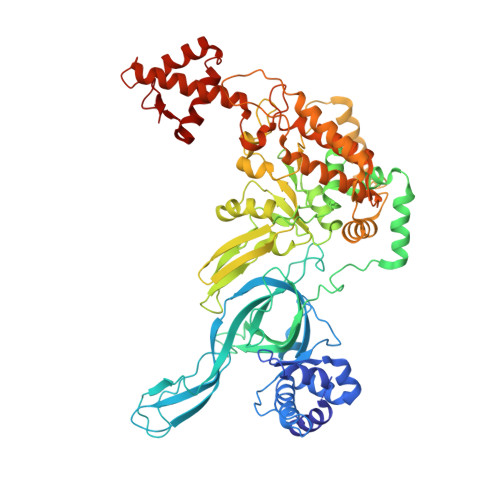Open architecture of archaea MCM and dsDNA complexes resolved using monodispersed streptavidin affinity CryoEM.
Ma, J., Yi, G., Ye, M., MacGregor-Chatwin, C., Sheng, Y., Lu, Y., Li, M., Li, Q., Wang, D., Gilbert, R.J.C., Zhang, P.(2024) Nat Commun 15: 10304-10304
- PubMed: 39604363
- DOI: https://doi.org/10.1038/s41467-024-53745-w
- Primary Citation of Related Structures:
8X7T, 8X7U, 9JA0, 9JA1 - PubMed Abstract:
The cryo-electron microscopy (cryoEM) method has enabled high-resolution structure determination of numerous biomolecules and complexes. Nevertheless, cryoEM sample preparation of challenging proteins and complexes, especially those with low abundance or with preferential orientation, remains a major hurdle. We developed an affinity-grid method employing monodispersed single particle streptavidin on a lipid monolayer to enhance particle absorption on the grid surface and alleviate sample exposure to the air-water interface. Using this approach, we successfully enriched the Thermococcus kodakarensis mini-chromosome maintenance complex 3 (MCM3) on cryoEM grids through biotinylation and resolved its structure. We further utilized this affinity method to tether the biotin-tagged dsDNA to selectively enrich a stable MCM3-ATP-dsDNA complex for cryoEM structure determination. Intriguingly, both MCM3 apo and dsDNA bound structures exhibit left-handed open spiral conformations, distinct from other reported MCM structures. The large open gate is sufficient to accommodate a dsDNA which could potentially be melted. The value of mspSA affinity method was further demonstrated by mitigating the issue of preferential angular distribution of HIV-1 capsid protein hexamer and RNA polymerase II elongation complex from Saccharomyces cerevisiae.
- Division of Structural Biology, Wellcome Centre for Human Genetics, University of Oxford, Oxford, UK.
Organizational Affiliation:
















